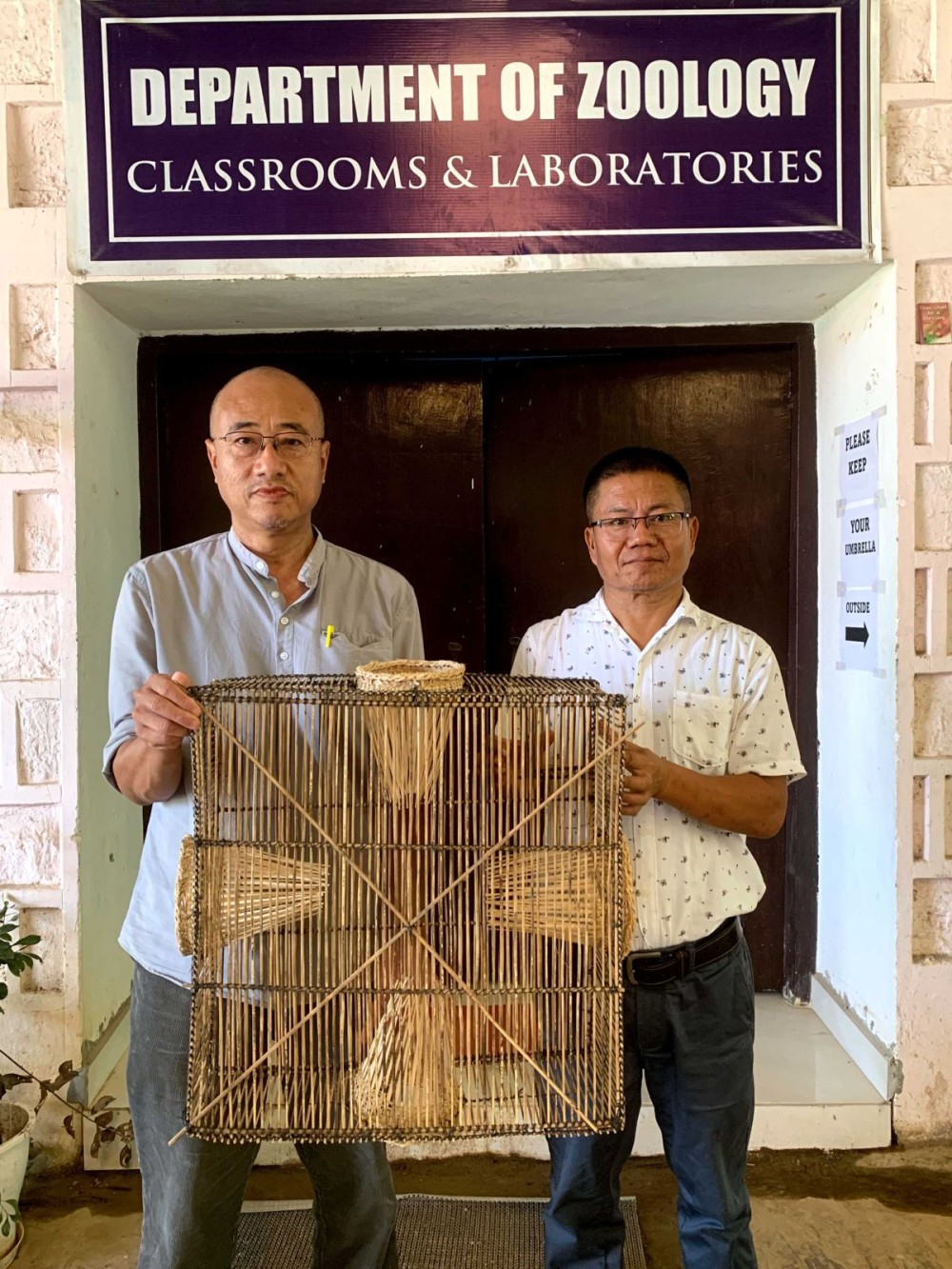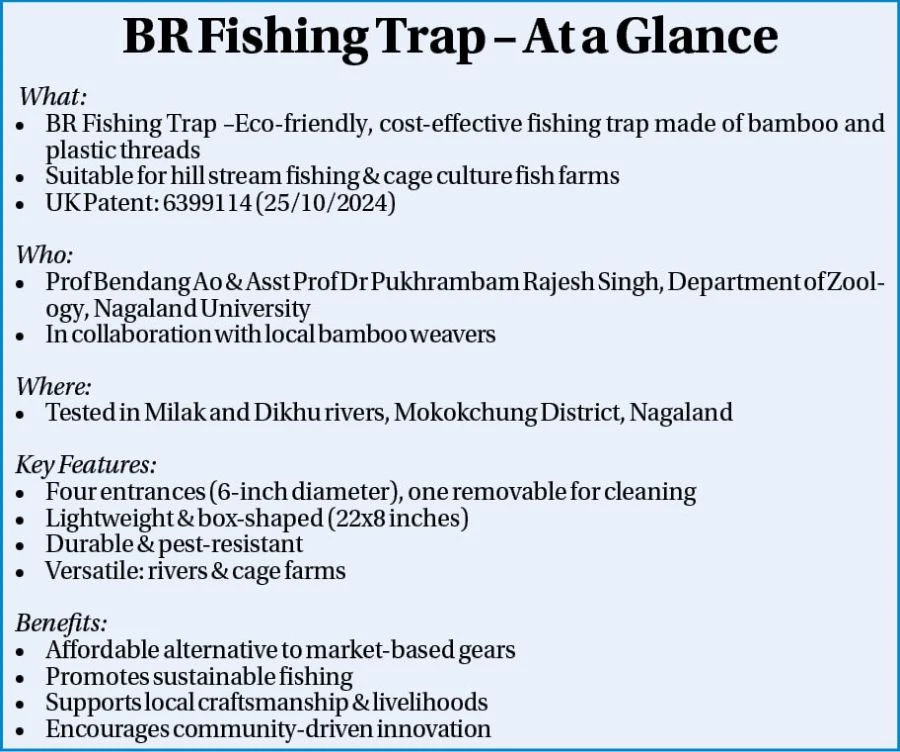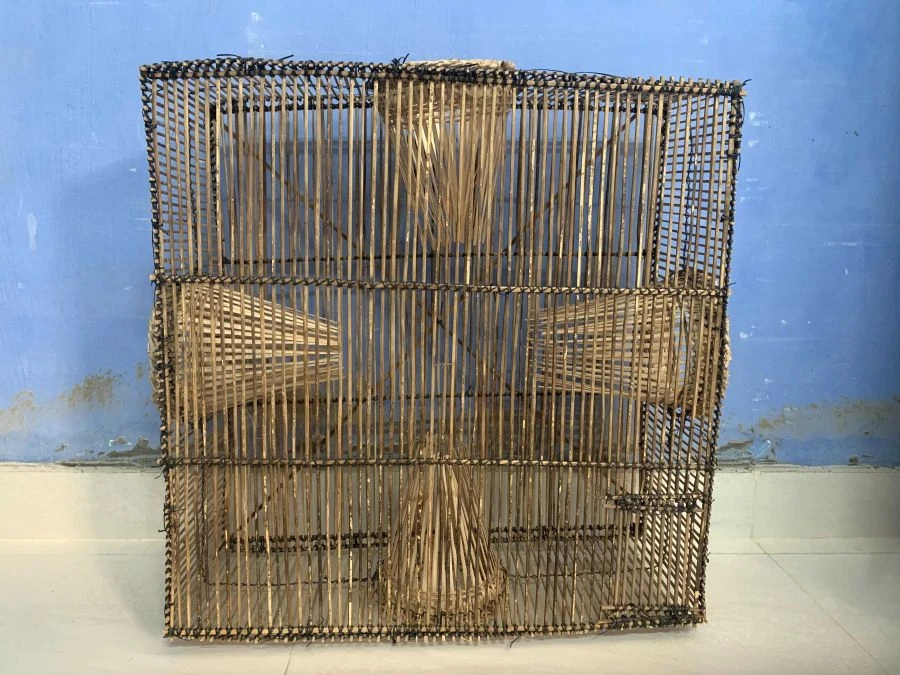Prof Bendang Ao & Assistant Professor Dr Pukhrambam Rajesh Singh of NU’s Department of Zoology pose with the ‘BR Fishing Trap’.

Lumami, September 29 (MExN): A research team from Nagaland University (NU) in collaboration with local weavers has developed a cost-effective and eco-friendly fishing trap for sustainable hill stream fishing, the university announced on Monday.
The innovation christened the ‘BR Fishing Trap’ was developed by research team led by Prof Bendang Ao and Assistant Professor Dr Pukhrambam Rajesh Singh of NU’s Department of Zoology.
The duo’s research focused on studying the diversity of ichthyofauna (types or varieties of fish) and plankton (tiny plants and animals) in the Milak and Dikhu rivers of Mokokchung District.
The trap is uniquely designed to support fishing in hill streams and cage-culture fish farms, offering a promising alternative to expensive, market-based fishing gear, the university said in a statement.
The innovation has been patented in the United Kingdom as of October 10, 2024, and strengthens Nagaland University’s growing reputation for research-driven societal solutions, it added.

According to the statement, during their research, the team faced challenges as many fishing gears were either expensive or unavailable in local markets. This led the researchers to collaborate with local bamboo weavers, resulting in the creation of the BR Fishing Trap.
According to the university, the BR Fishing Trap has several unique features, including four entrances, unlike most traps with one or two entry points, making it highly efficient. Each entrance is 6 inches in diameter, with one removable entrance for easy release of fish and cleaning.
Measuring 22 x 8 inches, it is lightweight, easy to install, transport, and clean. The bamboo strips and plastic thread construction make it robust, long-lasting, and pest-resistant.
The device is effective in both rivers and cage-culture fish farms, the university added.
Highlighting the trap’s unique aspects, Dr Singh noted that fishing in hill streams often depends on market-based gears, which are costly and not always suitable.

“By designing this trap with local bamboo weavers, we created a solution that is not only cost-effective and durable but also empowers local craftsmanship. We hope it inspires more community-driven innovations,” he added.
Beyond its ecological advantages, the BR Fishing Trap also holds strong socio-economic potential. By relying on locally available materials and the skills of traditional bamboo artisans, it can encourage regional enterprise development, job creation, and livelihood security in fishing communities across Nagaland and beyond.
Meanwhile, NU Vice Chancellor Prof Jagadish K Patnaik lauded the researchers and maintained that the BR Fishing Trap is not just an innovation but also a symbol of how indigenous knowledge and local resources can drive sustainable growth.
He added that the invention will benefit communities directly while showcasing Nagaland’s contribution to global sustainable practices.
“Our university is committed to solutions that connect research with the real-life challenges of our people,” Prof Patnaik asserted.





